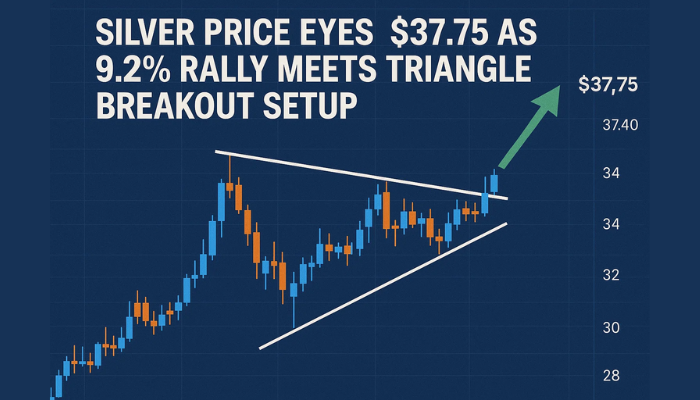Gold Falls to $2,336 Amid Weak US Economic Data; What’s Next?
Gold prices (XAU/USD) faced a downturn on Tuesday, dropping to the range of $2,316-$2,315, inching back toward a multi-week low influenced

Gold prices (XAU/USD) faced a downturn on Tuesday, dropping to the range of $2,316-$2,315, inching back toward a multi-week low influenced by a modest uptick in the US Dollar (USD).

Despite this, the dollar’s recovery, starting from over a two-month trough, found little momentum as markets increasingly accepted the likelihood of the Federal Reserve (Fed) reducing interest rates later in the year.
This shift, driven by softer US macroeconomic data, has held US Treasury yields at depressed levels, which traditionally benefits gold—a non-interest-bearing asset.
During Wednesday’s Asian session, geopolitical tensions in the Middle East further buoyed gold prices, nudging them toward the 50-day Simple Moving Average (SMA) of $2,320.
Market Pulse: Geopolitical Tensions and Fed Rate Cut Expectations Lift Gold
Gold’s price movements this week have been constrained within a narrow range, reflecting investor caution.
Traders seem reluctant to place aggressive bets, opting to wait for pivotal US economic data, including the much-anticipated monthly Nonfarm Payrolls (NFP) report, expected to be released on Friday.
Leading up to this, Wednesday’s financial docket, featuring the US ADP report on private-sector employment and the ISM Services PMI, is likely to stir some market activity.
Key Economic Data Influencing Gold Prices
Recent economic indicators have painted a somewhat bleak picture of the US economy. The Job Openings and Labor Turnover Survey (JOLTS) for April revealed a significant drop in job openings, down by 296,000 to 8.059 million—the lowest figure observed in more than three years.
This downturn followed Monday’s ISM Manufacturing PMI, which unexpectedly dipped, signaling a potential slowdown in economic activity.
These developments have solidified market expectations for a September rate cut by the Fed, which in turn has kept both the two-year and benchmark 10-year US Treasury yields hovering near two-week lows, currently around 2.9% and 3.1% respectively. This suppression in yields has limited dollar gains and provided some support to gold prices.
Anticipation High for Upcoming Economic Reports
As of Wednesday, gold prices saw a modest rise in Asian trading but continued to operate within a familiar range, amidst ongoing speculation about the Fed’s rate cut timeline.
The cautious approach in the markets is expected to persist until Friday’s NFP report, which could provide clearer insights into the labor market’s condition and influence Fed policy decisions.
Meanwhile, industrial metals such as copper are reflecting broader economic concerns, with prices touching a near one-month low, eroding gains from a peak in May amid growing fears over a global economic slowdown.
Looking forward, the financial community remains fixated on the upcoming Fed meeting next week, where rates are anticipated to remain unchanged in the face of persistent inflation in the US.
This meeting, along with the release of further economic data, could be crucial in shaping gold’s price trajectory in the near term.
Gold Price Forecast
Gold’s daily technical outlook for June 4 reflects a slight decline in price, closing at $2,336.74, marking a decrease of 0.24%.
The four-hour chart indicates key price levels with the pivot point set at $2,327.10. Gold faces immediate resistance at $2,351.67, with subsequent barriers at $2,366.35 and $2,379.00.

On the downside, immediate support is found at $2,307.26, followed by further cushions at $2,294.00 and $2,277.55.
The Relative Strength Index (RSI) stands at 48, suggesting a neutral momentum, while the 50-day Exponential Moving Average (EMA) is at $2,345.21, slightly above the current price, indicating a potential resistance level.
In conclusion, the outlook for gold remains cautiously bullish above the $2,327 mark.
- Check out our free forex signals
- Follow the top economic events on FX Leaders economic calendar
- Trade better, discover more Forex Trading Strategies
- Open a FREE Trading Account


